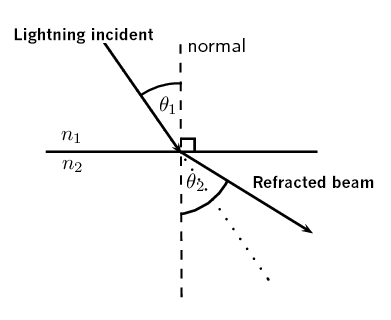Snell's law
This law was discovered by Willebrord Snell Van Royen in 1621 and is intended to know the angle of refraction of light as it passes through a surface with a different refractive index.
Snell's law can also be seen as the law of refraction of light and Fermat's principle, this law states that the connection that has the sines of the angles that are in refraction is the same as the inverse ratio of the indices that has the refraction within the media.
Fermat's principle can lead to the law of refraction, which states that light travels between two points in the shortest possible time.
Snell's law is the law that establishes the connection between the angle of incident light and the angle of transmitted light.
How does Snell's law relate to magnetism?
Snell's law connects the angle of refraction of light passes through the separation found in two different media both in the propagation of light and in an electromagnetic wave.
Below, we can see a table of the cooling rates of some substances.
It is related to the refraction of waves.
Snell's Law Formula
The following formula means that the angle of reflection is equal to the angle of incidence.
n1- sinθ1=n2 - sinθ2
n1 = refractive index of the first medium
n2 = refractive index of the second medium
sin = trigonometric function of sine
θ1 = angle of incidence of the light beam
θ2 = exit angle of the light beam
In the case where n1 >n2 andsinθ1> sinθ2 e the refracted index approaches the normal.
In the case where n1 sinθ1 sinθ2 e the refracted index moves away from the normal.
The proof of Snell's law can be obtained from Fermat's principle. To derive the law of reflection to Fermat's principle, one needs to know the path length from A to B:
Snell's law establishes the relationship between a ray of light crossing the boundary or surface of separation between 2 substances lying side by side and the corresponding refractive index.
Applications of the law of refraction
The application of this law allows us to have prisms, among other things. Without this bending of light, we would not be able to focus our retina.
Some examples of Snell's law are the reflection of the field in the water of the lake. Another clear example of this law is the optical fiber which is used in data networks.










